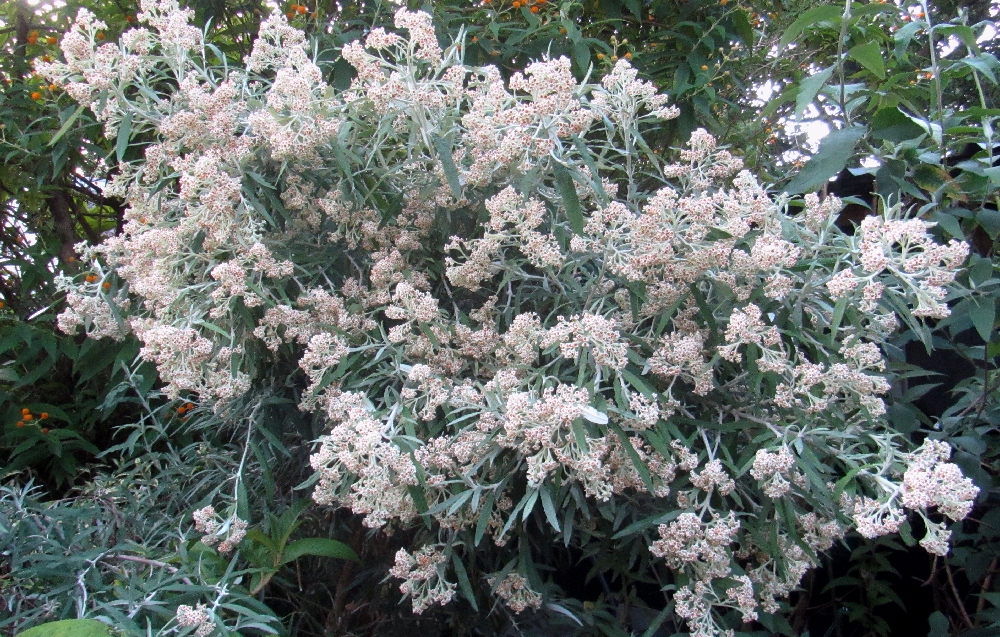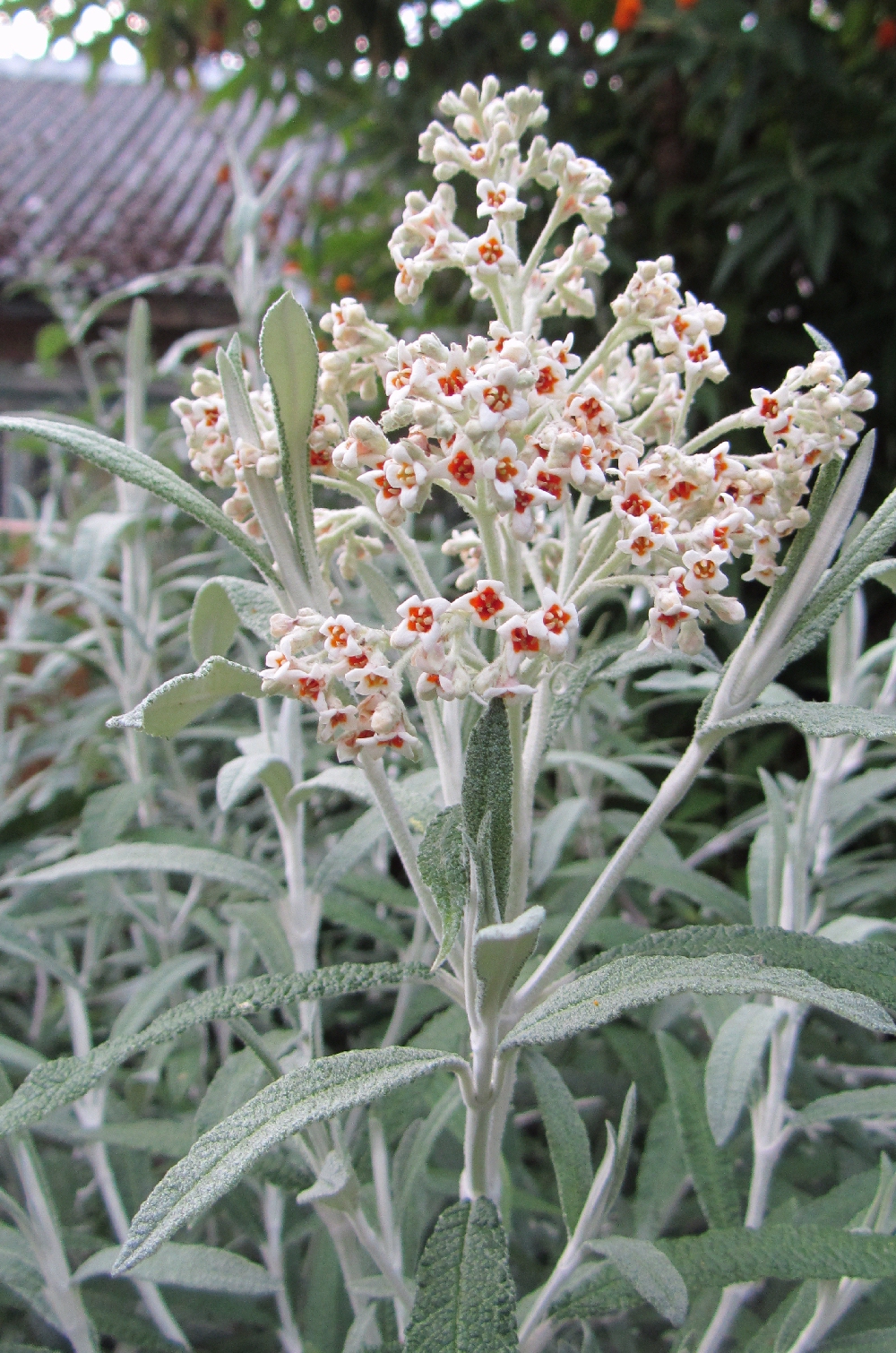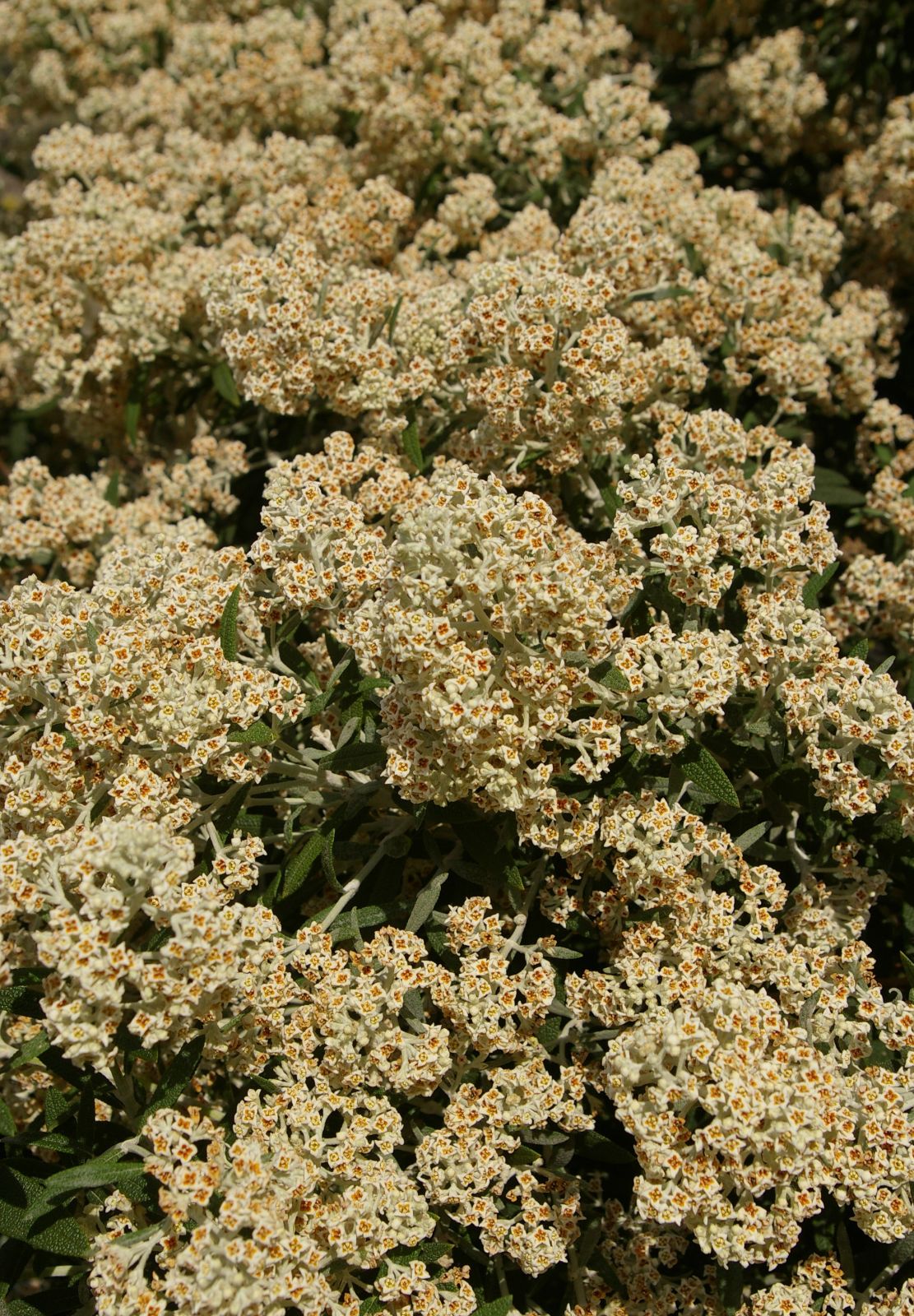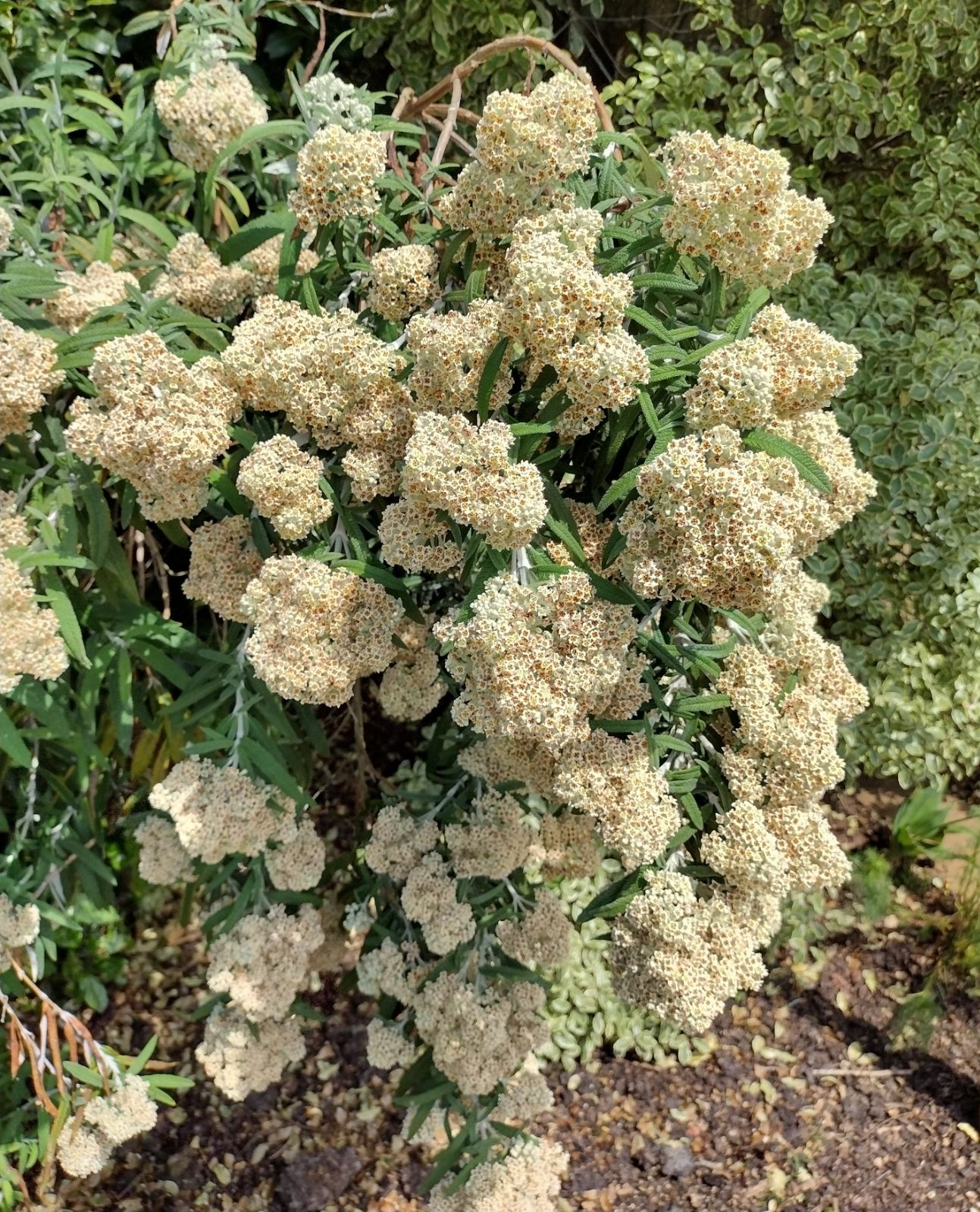Buddleja loricata
Sponsor
Kindly sponsored by
The John Spedan Lewis Foundation
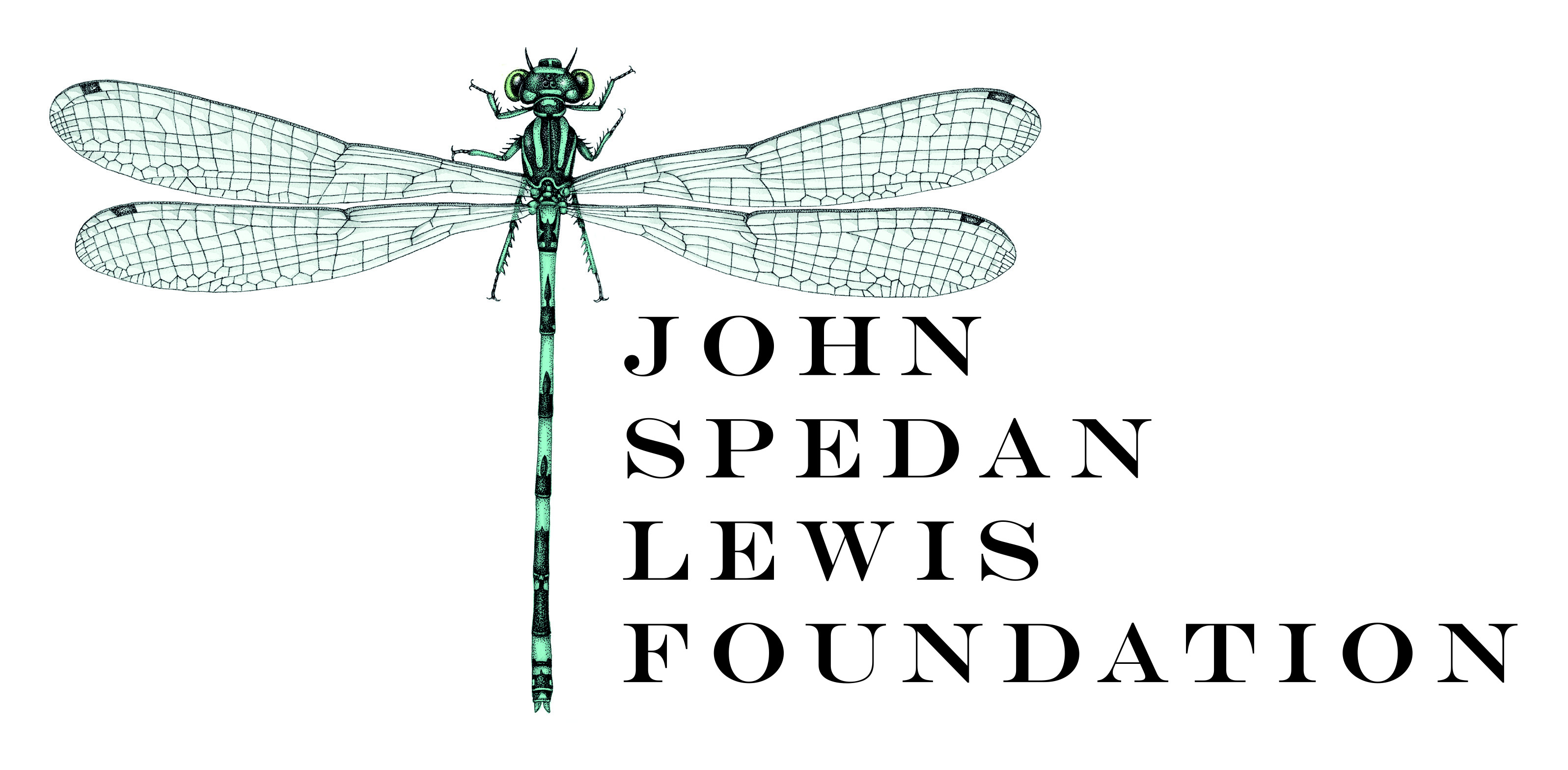
Credits
Andrew Large (2021)
Recommended citation
Large, A.T. (2021), 'Buddleja loricata' from the website Trees and Shrubs Online (treesandshrubsonline.
Genus
Common Names
- Mountain Sagewood
Synonyms
- Nuxia corrugata Benth.
- Chilianthus corrugata (Benth.)
- Buddleja corrugata Benth.
Other taxa in genus
- Buddleja albiflora
- Buddleja alternifolia
- Buddleja araucana
- Buddleja asiatica
- Buddleja auriculata
- Buddleja caryopteridifolia
- Buddleja colvilei
- Buddleja cordata
- Buddleja crispa
- Buddleja crispa × lindleyana
- Buddleja curviflora
- Buddleja davidii
- Buddleja delavayi
- Buddleja fallowiana
- Buddleja fallowiana × davidii
- Buddleja FLUTTERBY™ Series
- Buddleja forrestii
- Buddleja globosa
- Buddleja glomerata
- Buddleja japonica
- Buddleja lindleyana
- Buddleja LO AND BEHOLD® Series
- Buddleja longiflora
- Buddleja × luteolufaucia
- Buddleja macrostachya
- Buddleja marrubiifolia
- Buddleja megalocephala
- Buddleja 'Miss Ruby'
- Buddleja 'Morning Mist'
- Buddleja myriantha
- Buddleja New Dwarf Hybrids
- Buddleja nivea
- Buddleja officinalis
- Buddleja 'Orange Sceptre'
- Buddleja paniculata
- Buddleja × pikei
- Buddleja 'Pink Delight'
- Buddleja saligna
- Buddleja 'Salmon Spheres'
- Buddleja salviifolia
- Buddleja 'Silver Frost'
- Buddleja speciosissima
- Buddleja 'Summer Beauty'
- Buddleja virgata
- Buddleja × wardii
- Buddleja × weyeriana
- Buddleja × weyeriana Hybrids
- Buddleja 'Winter Sun'
Shrub 1–4 m, with a bushy habit. Branchlets terrete to subquadrangular, stellate-tomentose. Leaves evergreen, opposite, upper surface bullate, underside stellate-tomentose, narrowly elliptic, 3.5–10 × as long as wide; up to 12 cm long. Inflorescence terminal, paniculate, up to 12 × 10 cm. Flowers shortly pedicellate, honey-scented; corolla four-lobed, 6–8 mm diameter, white to pale yellow with a yellow or orange throat; corolla tube 3.5–5 mm long, cup-shaped, outside stellate-tomentose, inside glabrous or with a few simple hairs. Anthers inserted just below corolla mouth, filaments very short. Stigma rather large, ovoid and laterally compressed, at corolla mouth. Flowering May to June (UK), followed by ellipsoid dehiscent capsule 3–4 × 1.5–2 mm. Seeds brown, small, 2 × 0.5 mm with acute wing at both ends. (Leeuwenberg 1979).
Distribution Lesotho South Africa Free State, KwaZulu-Natal, Eastern Cape
Habitat Slopes of high mountains, 1600–2700 m, among boulders along water courses and in damp gullies.
USDA Hardiness Zone 7-9
RHS Hardiness Rating H5
Conservation status Not evaluated (NE)
Commonly known as Mountain Sagewood in its native South Africa, Buddleja loricata is hardy, resistant to heat and drought, and fully evergreen, unlike most species which normally show at least some foliage loss during the winter. Of all the African species it is the hardiest; it can survive a covering of snow, and has proven capable of withstanding temperatures down to –10°C without damage in the UK Midlands (pers. obs.). It is an attractive foliage plant with year round interest, and has narrow dark green leaves with a bullate upper surface,and a silvery underside; the sweetly-scented white inflorescences are in wide panicles of a hundred or more individual flowers, opening from late May to early July in the UK. Pruning is optional, and only necessary for controlling the size; any hard-pruning should be straight after flowering. Alternatively, it can just be lightly trimmed to be kept tidy. It will grow in any type of well-drained soil, but requires full sun for at least part of the day (Stuart 2006).
Buddleja loricata sems to have been introduced to cultivation by the Compton, D’Arcy & Rix expedition to South Africa in 1988, under the number CDR 107. The gathering came from 1200 m on Ngele mountain, Uga District, Kwa-Zulu Natal, and soon became established in British gardens (John Grimshaw (pers. comm. 2021) was given a cutting-raised plant in 1998). Plants raised from a collection made by the Saunders of Silverhill Seeds, Cape Town, were offered by Heronswood Nursery, Washington, from 1997 and may well have been the first introduction to North America (D.J. Hinkley pers. comm. 2021); in Hinkley’s garden at Windcliff, Indianola, Washington, it quickly formed large shrubs, planted on the cliff-edge to carry the fragrance through the garden (Hinkley 2009) and by 2021 have been ‘unfettered by very low temps for well over twenty years’.
B. loricata has been hybridised with the Himalayan B. crispa to produce the ornamental shrub Buddleja ‘Morning Mist’, most often sold under the trade designation SILVER ANNIVERSARY.

